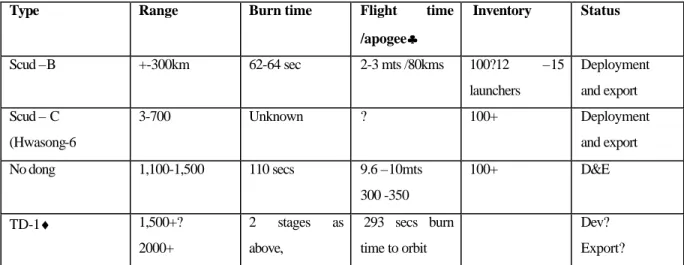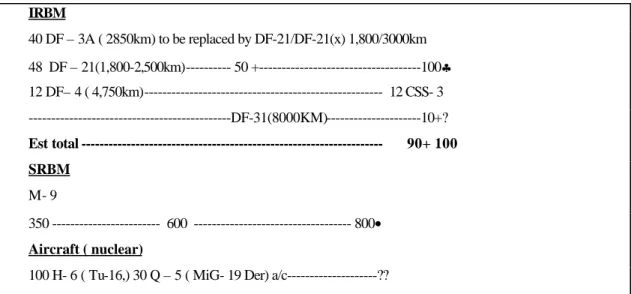Once again, MD's success lay in negotiating another “first” – the elimination of an entire class of missiles with the signing of the Intermediate Forces Treaty. This became known as the CPI (Counter Proliferation Initiative), a pet project of the OSD and was later clarified as “the Department of Defense activities across the entire reach of the US.” Such developments would obviously have consequences far beyond US territory. United States, China or Russia.
These shifts can be clearly perceived in terms of relations with its main ally, the United States. At one extreme, the deployment would be, in effect, the equivalent of firing the starter's gun at the beginning of a race with an uncertain ending. MD is much more than just a weapon system and therefore a deployment decision must be preceded by an evaluation of the following:-.
With this as an introduction, the paper examines the starting point of all decision-making - the vital interests of the country. The first shift naturally arises from the collapse of the Soviet Union and the shift of the "theatre of tensions" from Europe to Asia. It is no coincidence that Central Asia was moved to the responsibility of CENTCOM, making it essentially the "oil command" of the US.
The second shift stems from the obvious fact of the collapse of the Soviet Union and the undoubted conventional and nuclear superiority of the United States over all other powers currently in the nuclear ring.
MISSILE DEFENSE AND VITAL INTERESTS
The preservation of the Alliance may therefore be a connected or secondary interest. When perceived as unproductive or burdensome, this perception may change despite the diplomatic and other advantages this alliance provides. As Europe during the height of the Cold War, faith in the credibility of the US guarantee has and will probably never be absolute, it follows that the more nuclear-capable states - or a nuclear regional power - that emerges around Japan , the more it comes into play.
The meteoric rise from a debt-ridden country to the world's second largest economy was closely linked to the absence of war (as opposed to peace). One of the most serious "threats" to the Japanese economy came from the oil shocks of the 1970s, and it is important to remember that this factor played a role in Japanese decision-making during the Gulf War. Meanwhile, the threat from North Korea has caused some shifts in the importance of military command, with troops moving from the Hokkaido area (where they are supposed to counter a potential Russian threat) to western Japan, near the Korean Peninsula.
Lightweight variations of the TD-2 can fly as far as 10,000 km, putting the western US at risk. Interestingly, many feel that the Chinese occupation of Taiwan is only in addition to the actual dominance of the surrounding sea67. This led to an apparent serious consideration of using nuclear weapons to win wars.
It is common knowledge that tactical nuclear weapons are part of the PLA's military doctrine. There is also the issue of the DF-31, which, while mobile, is barely within ICBM range. Although this can only be assessed in the future, it should be emphasized that there is nothing "minimum" in terms of a regional deterrence posture.
This remaining arsenal was considered capable of causing harm (cost) that was unacceptable relative to the interests of the aggressor involved (benefit). The current and future capabilities of the Chinese missile force appear to be as follows. Source: Report to Congress, "Annual Report on the Military Power of the People's Republic of China", FY 2000).
However, with the US decision to have an emergency deployment until 2005-2007, this slow progress will have to pick up considerably. Source: this table is adapted from Lin Bin "The Effects of NMD on Chinese Strategy", March 7, 2001.

JAPAN – TOWARDS MISSILE DEFENSE
In 1993, the first meeting of the US-Japanese Working Group at the TMD level convened at PACOM in Hawaii. At the end of the three-year period, both parties would be free to leave the project or proceed to the demonstration and validation phase. While the administration expressed support for the second half of Bush's speech on nuclear reductions, and "shared the common view with the US" on missile proliferation, that simply happened.
Analyzes of NTW/SMD must necessarily be limited, as the program is one that appears to be still under construction. It has an anti-missile capability with a range of at least up to 3,000 km (which includes the Nodong type and the DF-21). Therefore, for Japan, the main issue is to restore the credibility of the US guarantee for Japanese defense planning, as well as in the eyes of Beijing.
Second, a limited MD can free the Japanese from being part of the “deterrence asymmetry” and resulting instability that underlies the U.S.-China relationship. Because these processes are out of the public eye, Chinese analysts may feel less need to play to the gallery. Being a mobile system, the Aegis ships could also be used for support activities during the SDF's deployment to other missile-intensive locations (e.g. in the Middle East).
A full MD system would certainly provide a “seamless web” of defense, as the Japanese MD would be an essential part of the defense of the United States. Third, as a critical part of U.S. defense, Japanese installations would be even more attractive to powers willing to breach U.S. defenses and restore deterrence options. However, as part of the defense umbrella, it would be knowingly drawn into the conflict.
Akio Watanabe “The Past and Future of the US-Japan Alliance”, Japan Review of International Affairs, Fall 2001 .pp 172-202. 54 Text, "Report of the Commission to Assess the Ballistic Missile Threats to the United States", 104th Congress, July 15, 1998. For details on the agreement, see the official website of the Japanese Defense Agency, http//www.jda .go.jp.
As translated on the website of the Institute of Strategic Studies, National Defense Academy, United States. 97 Statement by the Chief of Cabinet on the Transfer of Military Technologies to the United States, January 14, 1983.
